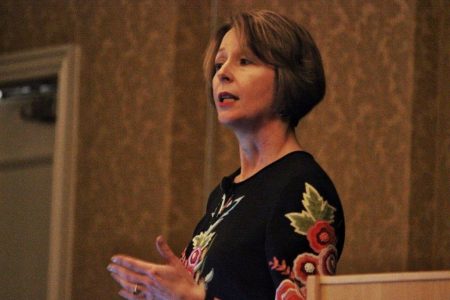
Global Campaigning on Global Goals: North American Tea Conference
 Last month, I had the opportunity to speak at the North American Tea Conference in Niagara Falls, Ontario. Global Campaigning on Global Goals: At a time when tea is benefitting from social and health trends, it is timely to make sure your promise lives up to modern expectations. The Global Goals agreed by the United Nations, known at the Sustainable Development Goals, apply to all countries–developed and developing–and provide the basis for social license to operate. The Sustainable Development Goals are the key lines currently shaping the global development agenda. As such, they are responsible for both directing and informing internationally significant ongoing trends and perspectives with regards to socio-economic and ethical issues, the environment, and human health. They have been agreed upon by the United Nations, and apply to all countries, developed and developing alike. Aligning values and practices with the 2030 Agenda is therefore crucial for any business seeking to make a positive contribution to the well being of the planet, and the people who inhabit it. This is doubly important in sectors comprising world spanning networks of trade, information, and investment, such as the tea industry. The vast and internationally interconnected nature of their supply chains creates enormous potential for progressive policies to generate exceptional achievements in combating poverty and myriad forms of deprivation.
Last month, I had the opportunity to speak at the North American Tea Conference in Niagara Falls, Ontario. Global Campaigning on Global Goals: At a time when tea is benefitting from social and health trends, it is timely to make sure your promise lives up to modern expectations. The Global Goals agreed by the United Nations, known at the Sustainable Development Goals, apply to all countries–developed and developing–and provide the basis for social license to operate. The Sustainable Development Goals are the key lines currently shaping the global development agenda. As such, they are responsible for both directing and informing internationally significant ongoing trends and perspectives with regards to socio-economic and ethical issues, the environment, and human health. They have been agreed upon by the United Nations, and apply to all countries, developed and developing alike. Aligning values and practices with the 2030 Agenda is therefore crucial for any business seeking to make a positive contribution to the well being of the planet, and the people who inhabit it. This is doubly important in sectors comprising world spanning networks of trade, information, and investment, such as the tea industry. The vast and internationally interconnected nature of their supply chains creates enormous potential for progressive policies to generate exceptional achievements in combating poverty and myriad forms of deprivation.
There are many Goals that are particularly relevant to the tea sector, including:
- Goal 1 “no poverty”. The tea community has an important role to play in ensuring that all men and women, in particular the poor and the vulnerable, have equal rights to economic resources and access to basic services. They can do this by empowering youth and smallholder farmers, and ensuring that wages and working conditions for all of those implicated in their supply chains provide a standard of living above global poverty thresholds.
- Goal 2 “zero hunger”. In an increasingly hungry world, improving the sustainability of supply chains, investing in agronomics, and diverting surplus that would otherwise end up as food waste to food banks can make a big difference.
- Goal 5 “gender equality”. Tea companies must put in place gender inclusion programs, and guarantee that women in their supply chains benefit from security, social protection services, and the possibility of maternity leave.
- Goal 6 “clean water and sanitation”. Businesses must seek to make their water use as efficient as possible, and crack down on wastage.
- Goal 8 “decent work and economic growth”. This will only be achievable through scaling-up sustainable supply chains, including processing and packaging activities, and ensuring that appropriate labor standards are enforced throughout.
- Goal 12 “responsible production and consumption”. This will entail businesses cutting down on food loss and waste at every stage of their supply chains, and investigating the life cycle of the packaging they employ, to make them as environmentally sustainable as possible.
- Goal 13 “climate action”. Mitigating the impacts of climate change is a moral imperative, meaning that tea industry leaders must explore practices such as carbon off-setting and climate-smart agriculture, to attempt to reduce as much as possible their greenhouse gas footprints.
- Goal 14 “life below water”. In addition to efficiently managing trade-offs in water demand between agricultural and urban users, companies must also seek to minimize, and eventually eliminate their contributions to marine pollution
- Goal 15 “life on land”. Around 1.6 billion people currently depend on forests for their livelihoods. More sustainable forestry practices must be a key component of tea industry operations going forward, given that the tea drying process can use as much as the output of one hectare of timber to dry the output of three hectares of tea, and that tea plantations are often located in or around biodiversity hotspots.
- Goal 17 “partnerships for the goals”. Finally, active engagement with the Goals and those seeking to fulfill them will be vital to any business seeking to make a difference. This will require a pro-active approach to monitoring and reporting on relevant economic, social, and governance indicators related to their activities and supply chains.
Each of these goals presents wonderful opportunities for the tea industry to prove themselves leaders in ongoing global efforts to build a brighter and more sustainable future.